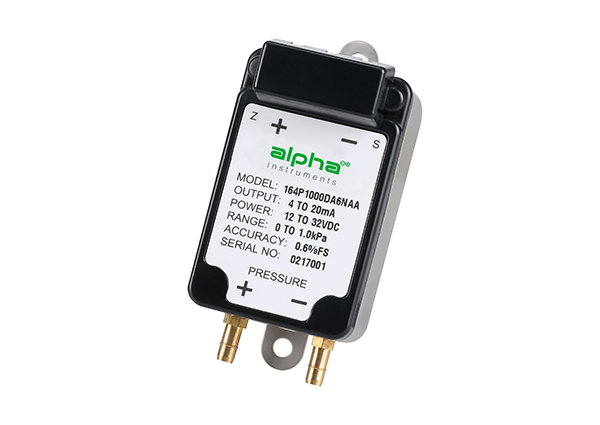THE TYPES OF LOW DIFFERENTIAL PRESSURE SENSOR
(2021年11月26日)https://www.alphainstruments.com/product/model-165-differential-pressure-transmitter/
As a professional differential pressure transmitter manufacturer, Alpha instruments Inc was founded in 2005, in Massachusetts, US. We specialized in the development and manufacture of low differential pressure transducer, which were applied in HVAC, Critical Environments, Medical Industry, Semiconductor Equipment, etc.
The low differential pressure sensor is generally divided into three categories: piezoresistive sensor, capacitive transducer and microelectromechanical (MEMS) sensor.
1. Piezoresistive sensor
Piezoresistive sensor is usually made of silicon and is bonded to a steel substrate by the adhesive effect between metals. When pressure is applied, this single-crystal diaphragm will deform, so that the resistance in the Wheatstone bridge will detect the pressure and then output the voltage proportionally. Piezoresistive sensor has good resolution and bandwidth, which is suitable for the applications with insufficient budget.
But this type of sensor also has its limitations. It is very sensitive to temperature changes and tend to drift. What is worse, this type of sensor cannot provide a large enough area to induce pressure to produce effective diaphragm deformation. It is no doubt that the diaphragm can be made thinner, but this will reduce its strength and integrity as well as also increase the cost. When used for low pressure measurement, its measurement results are noisy and the long-term stability is poor. Therefore this type of sensor is more suitable for high pressure measurement.
2. Capacitive sensor
Capacitance-based pressure sensor has become the mainstream of pressure measurement applications. Compared with piezoresistive pressure sensor, capacitive type pressure transducer has higher pressure sensitivity and lower temperature sensitivity.
Other advantages also include: simple design, no need to use special materials, low energy consumption, high resolution and low cost.
The capacitive sensor consists of a compact housing and two insulated metal plates placed in parallel inside. One of the metal plates adopts a metal diaphragm, which can be slightly deformed under pressure, and the other one is an insulated stainless steel electrode. When a pressure difference is applied to the metal diaphragm, the metal diaphragm will be displaced relative to the fixed electrode, which will change the capacitance. The linear comparison circuit detects that the capacitance change generated is proportionally amplified and outputs a high-level voltage signal. The deformation of the metal diaphragm is extremely small, which is beneficial to reduce the hysteresis and repetitive errors as well as speed up the response.
3. Microelectromechanical (MEMS) sensor
MEMS (Microelectro Mechanical Systems) sensor is a common capacitive sensor. It etches actuators, mechanical parts and electronic devices on the silicon substrate by using microlithography technology, which can be manufactured in large quantities at low cost. In addition, its volume is constantly shrinking, and its diaphragm area has been reduced to 13mm².
However, this miniaturization trend also limits performance, such as insensitivity, inaccuracy and signal drift. Because it is made of brittle materials, MEMS sensor is prone to fracture under high stress and cannot withstand excessive force. The biggest limitation of capacitive MEMS sensors is that miniaturization limits its pressure sensitivity in high-pressure applications.
- «前のできごと |
- 次のできごと»
- このできごとのURL:



コメント